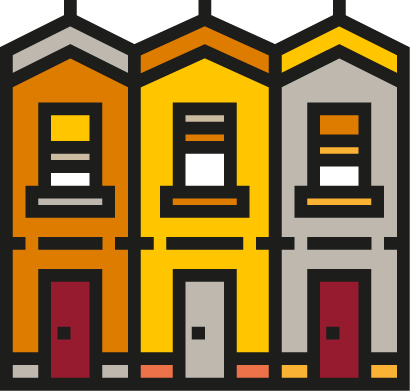As urbanization rapidly increases, city life is becoming a reality for an ever-growing share of the global population. While cities can create opportunities for health, urban living can also adversely impact the health and wellness of communities.
Drexel University's Urban Health Collaborative (UHC) in Philadelphia, PA, aims to understand and improve urban health, beginning with engagement locally and globally. To achieve this goal, our team of researchers at the UHC works to:
- Research the causes of urban health problems
- Evaluate policies and innovative solutions to urban challenges
- Invest in training urban health leaders
- Share what we learn
- Build partnerships between cities and with our local communities
The Urban Health Collaborative defines ‘urban’ as the geographies where people’s homes, workplaces and gathering spaces are concentrated. While cities are prominent in discussions of urban health, the definition of urban areas is often inclusive of areas surrounding cities as contexts for the diverse sectors of daily life.
Urban areas provide opportunities to understand how places affect health and to apply what we learn to promote and protect the health of people living in urban communities. Cities present many opportunities for health improvement, including:
- Design of cities and urban planning
- Location of food stores and parks
- Transportation and energy use
- Economic and social policies
Interested in studying and researching urban health with us? Learn more about public health degrees at Drexel.
Why Focus on Health in Cities?
By 2050 it is projected that nearly 70% of the world's population will live in cities, according to United Nations data. Cities will continue to offer complex public health challenges and opportunities for solutions.
What is a City?
Health issues faced by city residents have grown beyond traditional urban health concerns to include:

Infectious and chronic diseases

Toxic environmental exposures

Physical and mental health
Understanding the causes or determinants of these health challenges means drawing data and expertise from a variety of areas, including:

Safety

Employment

Poverty

Built Environment

Education

Housing
... to name a few.
Health Disparities Warrant Special Attention
In urban areas, there are often dramatic health differences from one neighborhood to the next. These inequities result from residential segregation and are reinforced by differences across neighborhoods in physical and social environments, many of which can be affected by policy.
In the U.S., urban residents are diverse in socioeconomic, racial, and ethnic backgrounds, which often make cities a place where health disparities across social groups and neighborhoods are most striking.
Globally, urban populations include those in tenuous and temporary living conditions, those subject to violence and persecution, and those at a systemic disadvantage. A focus on health inequities and vulnerable populations is key to achieving population health improvements.
Act Locally as Part of a Connected, Global Network
Improving population health requires taking seriously the questions posed by the public, health care providers, and policymakers, so that our work is relevant to local needs.
Urban health is a global challenge, and we are committed to spreading widely the ideas and information that can make people’s lives healthier.
Learn More:
Our Global Connections
Our Philadelphia Focus
Our Climate Change and Health Equity Research
Urban Health Graduate Programs